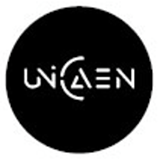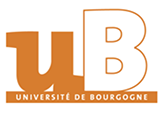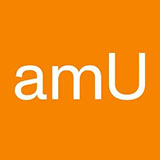Detailed introduction of Aix-Marseille University:
Introduction
Aix-Marseille University is the largest university in France and the largest university in the French-speaking countries and regions. Its history can be traced back to 1409, when the University of Aix was established by Louis II, Count of Provence.
Overview
Student size: Nearly 74,000 students are enrolled, including more than 10,000 international students from 128 different countries.
Course settings: It has a wide range of general and vocational courses, including 600 degree courses, covering the fields of art, language, literature, humanities and social sciences, health, sports and economics, law and political science, applied economics and management, and exact sciences.
Teaching and research units: It has 132 recognized research units and 21 colleges, and is an international center of excellence in humanities, social sciences and natural sciences.
History
In 1409, Louis II, Count of Provence, established the University of Aix, which was recognized by the Pope's Bull in 1413.
15 to 18 century, developed into an institution of classical learning, liberal arts, theology, law and medicine.
It was suppressed during the French Revolution, and later re-established in Aix and Marseille, and was called the University of Aix-Marseille.
In 1896, it became one of the 17 autonomous regional universities in France funded by the state.
In 1968, the French public university system was reformed, and the University of Aix developed into the University of Provence (Aix-Marseille I University) focusing on literature, art and humanities, the Mediterranean University (Aix-Marseille II University) focusing on technical medicine and science, and the Paul Cézanne University (Aix-Marseille III University) focusing on economics, management and law.
On January 1, 2012, the three universities merged and reorganized to form the new Aix-Marseille University. Marseille University.
School Strength
Faculty: Among the faculty and staff are five Nobel Prize winners, two Pulitzer Prize winners, four Cesar Prize winners, as well as several heads of state, heads of government, parliament speakers, government ministers, ambassadors and members of the French Republic's member academies.
Scientific research cooperation: with many research and teaching partnerships, including the French Higher Education Social Sciences Research Institute (EHESS) and the National Center for Scientific Research (CNRS), it is a member of the European University Association (EUA) and the Mediterranean University Union (UNIMED).
Government funding: As part of the French University of Excellence Plan, it receives 750 million euros in funding from the French government each year, making it one of the universities with the most education funding in the French public university system.
Institutional nature
Aix-Marseille University is a public, autonomous higher education institution.
Educational philosophy
Emphasizing the cultivation of students' comprehensive literacy and professional ability, focusing on interdisciplinary education and research, and encouraging students to explore and innovate between different fields to adapt to the diversified development needs of society.
Key laboratories and disciplines
Literature and Art: It has the world's first ergologie research center and the best Mediterranean archaeology and art history institute in Europe. It is the alma mater of the famous painter Paul Cézanne. It is a leader in France in plastic arts, film and drama. It also has the only interdisciplinary art institute in France (lesa: Art Science Research Laboratory).
Science and Engineering: The School of Engineering of the University of Marseille is a member of the Polytechnic Group. It offers 8 professional courses and graduates can obtain an engineering degree. Its advanced courses are highly professional. The teaching staff comes from the laboratories of major French research institutions and leaders in the field.
Earth Sciences and Meteorology: The Marseille Provence Observatory is one of the French national observatories hosted by the National Center for Scientific Research (CNRS) and the National Astronomical Institute (INSU). It has a large amount of financial participation in space research (CNES). Its basic research focuses on themes such as cosmology, galaxy formation and evolution, the formation of stars and planetary systems, and the exploration of the solar system. It also contributes to the study of climate systems in the field of environmental sciences and is very active in technical research and development such as optics and optical mechanics.
Political Science: The Institute of Political Science was established in 1956 and is one of the French national observatories. One of the 10 world-renowned political science institutes in the network, its main purpose is to train senior managers in the public, semi-public and private sectors, with a rigorous admissions process and multiple exchange activities through partnerships with about 120 different universities in the world.
Law: The Faculty of Law dates back to 1409 and is one of the largest law schools in France. It is considered one of the leading centers for legal research and teaching in the country and ranked second in the country for undergraduate studies in 2016/17.
Faculties
The University of Aix-Marseille has a total of 21 faculties covering a variety of subject areas such as arts, literature, languages, humanities and social sciences, health, sports, economics, law, political science, applied economics and management, and exact sciences.
Rankings
According to the Shanghai Jiao Tong University World University Rankings 2015, the University of Aix-Marseille ranks 100th among universities worldwide and 4th overall in the French public university system.
According to the 2022 Academic Ranking of World Universities, the University of Aix-Marseille ranks 101-150th, the 5th in France. University of the Netherlands.
Expenses
Tuition fees vary according to major and degree level. Generally speaking, undergraduate tuition fees are relatively low, about 200-400 euros per year; master's tuition fees are about 400-600 euros per year. In addition, students need to pay certain registration fees, textbook fees, accommodation fees and other living expenses.
Campus
Campus distribution: There are five main campuses.
Library system: including 59 libraries, 662,000 books, 20,000 online journals and thousands of digital resources, covering an area of about 37,056 square meters, of which 19,703 square meters are public access space, providing 49.2 kilometers of open shelves and 4,219 seats for students to study, and 487 computer workstations for public access.
Other facilities: There are also restaurants, sports stadiums and other facilities on campus, which enrich students' extracurricular life.
-

University of Angers
-

University of Bordeaux
-

University of Caen Normandy
-

Claude Bernard University Lyon 1
-

CY Cergy Paris University
-

Clermont Auvergne University
-

University of Artois
-

University of Burgundy
-

Jean Moulin University Lyon 3
-

University of Franche-Comté
-

Mesoamerican University
-

Istmo University
-

Mariano Galvez University of Guatemala
-

Regional University of Guatemala
-

Galileo University
-

Francisco Marroquín University
-

Rafael Landívar University
-

University of the Valley of Guatemala
-

University of San Carlos of Guatemala
-

Technological Institute of Tlaxcala Plateau
-

Golfo University
-

Technological University of South Sonora
-

Technological University of Huejotzingo
-

Tizimín Institute of Technology
-

Chilpancingo Institute of Technology

